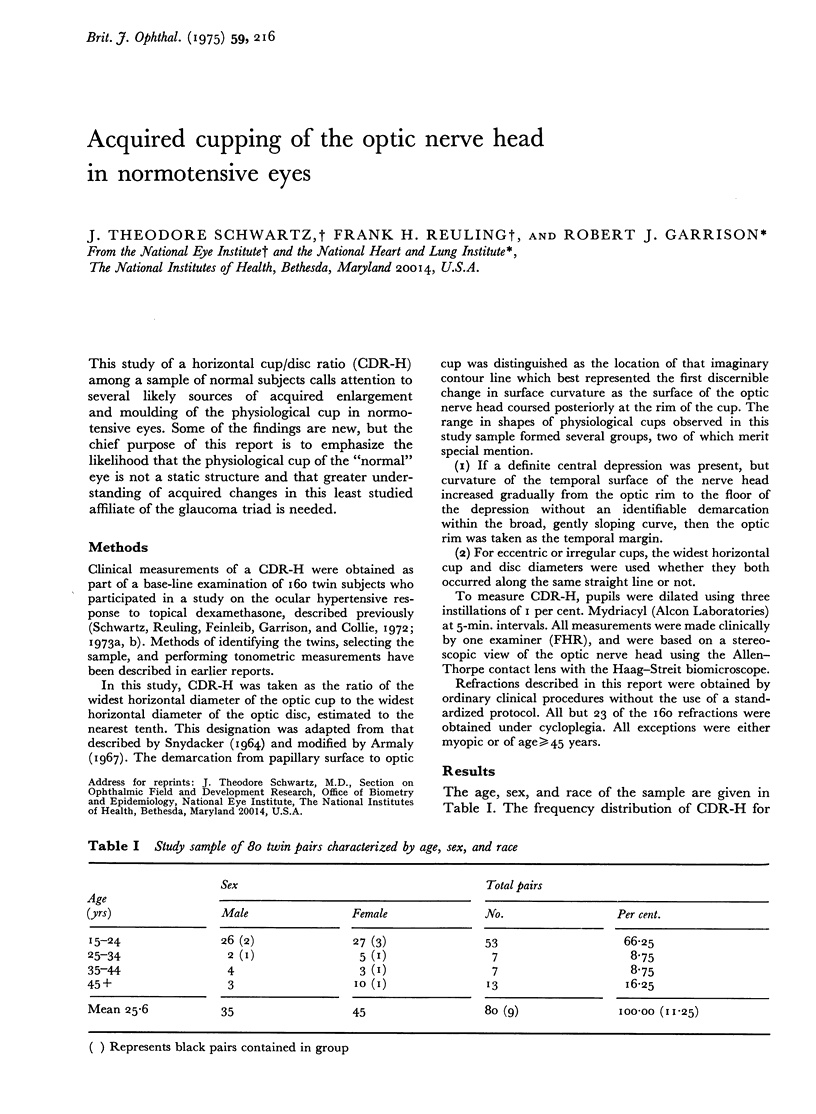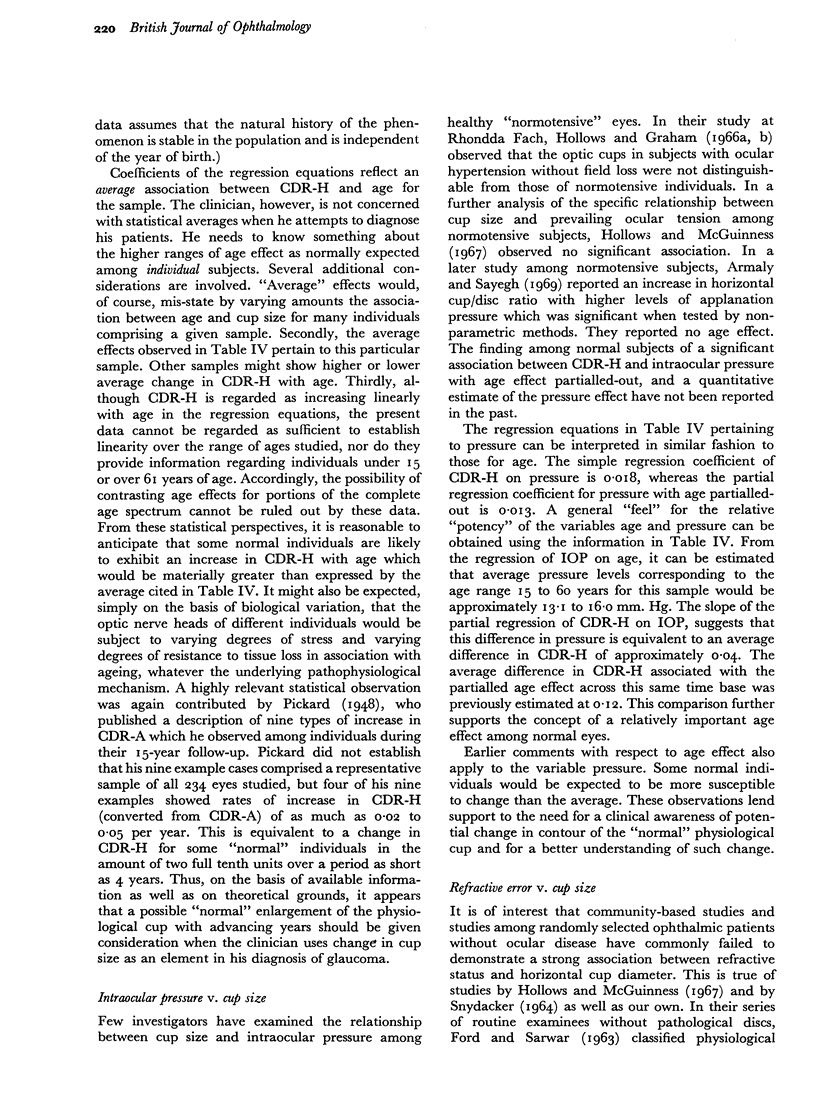Abstract
Clinical measurements of a horizontal cup/disc ratio were obtained among a sample of 160 normal twin subjects by stereoscopic biomicroscopy. Measurements of horizontal cup/disc ratio were normally distributed and theere was no significant association with sex, laterally, race, or refractive error in the mid-range. However, there was a significant association between size of the cup/disc ratio and age as well as intraocular pressure. After taking into account the correlation between age an intraocular pressure in normal eyes, the association between cup/disc ratio and each of these variable remained statistically significant. It is not always recoginized that the size of the normal physiological cup increases with age, and it was not previously observed that "normal" cupping occurs with age apart from the effect of pressure. The average effect of age on cup/disc ratio, amounting to an icrease of 0-0026 per year for this sample, is small. But, allowing for individual variation, some persons could show a recognizable acquired increase in cup/disc ration with age, even in the absence of glaucoma. The possibility of "normal"cupping occurring in association with age, pressure, or high myopia, alone or in combination, merits cosideration in the clinical evaluation of glaucoma suspects and serves to re-emphasize the importance of an adequate central visual field examination in the diagnosis of glaucoma. Studies are needed on the differentiatin between "normal" and "morbid" moulding of the optic nerve head.
Full text
PDF






Selected References
These references are in PubMed. This may not be the complete list of references from this article.
- Armaly M. F., Sayegh R. E. The cup-disc ratio. The findings of tonometry and tonography in the normal eye. Arch Ophthalmol. 1969 Aug;82(2):191–196. doi: 10.1001/archopht.1969.00990020193008. [DOI] [PubMed] [Google Scholar]
- FORD M., SARWAR M. FEATURES OF A CLINICALLY NORMAL OPTIC DISC. Br J Ophthalmol. 1963 Jan;47:50–52. doi: 10.1136/bjo.47.1.50. [DOI] [PMC free article] [PubMed] [Google Scholar]
- Hollows F. C., Graham P. A. Intra-ocular pressure, glaucoma, and glaucoma suspects in a defined population. Br J Ophthalmol. 1966 Oct;50(10):570–586. doi: 10.1136/bjo.50.10.570. [DOI] [PMC free article] [PubMed] [Google Scholar]
- Levene R. Z. Glaucoma. Arch Ophthalmol. 1971 Feb;85(2):227–251. doi: 10.1001/archopht.1971.00990050229019. [DOI] [PubMed] [Google Scholar]
- SNYDACKER D. THE NORMAL OPTIC DISC. OPHTHALMOSCOPIC AND PHOTOGRAPHIC STUDIES. Am J Ophthalmol. 1964 Dec;58:958–964. [PubMed] [Google Scholar]
- Schwartz B., Reinstein N. M., Lieberman D. M. Pallor of the optic disc. Quantitative photographic evaluation. Arch Ophthalmol. 1973 Apr;89(4):278–286. doi: 10.1001/archopht.1973.01000040280003. [DOI] [PubMed] [Google Scholar]
- Schwartz J. T., Reuling F. H., Feinleib M., Garrison R. J., Collie D. J. Twin heritability study of the effect of corticosteroids on intraocular pressure. J Med Genet. 1972 Jun;9(2):137–143. doi: 10.1136/jmg.9.2.137. [DOI] [PMC free article] [PubMed] [Google Scholar]
- Tomlinson A., Phillips C. I. Ratio of optic cup to optic disc. In relation to axial length of eyeball and refraction. Br J Ophthalmol. 1969 Nov;53(11):765–768. doi: 10.1136/bjo.53.11.765. [DOI] [PMC free article] [PubMed] [Google Scholar]


